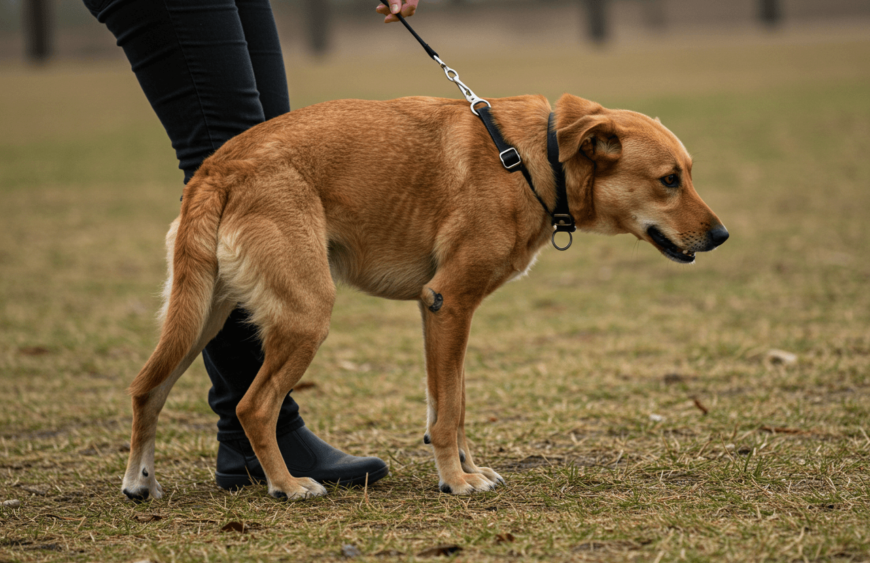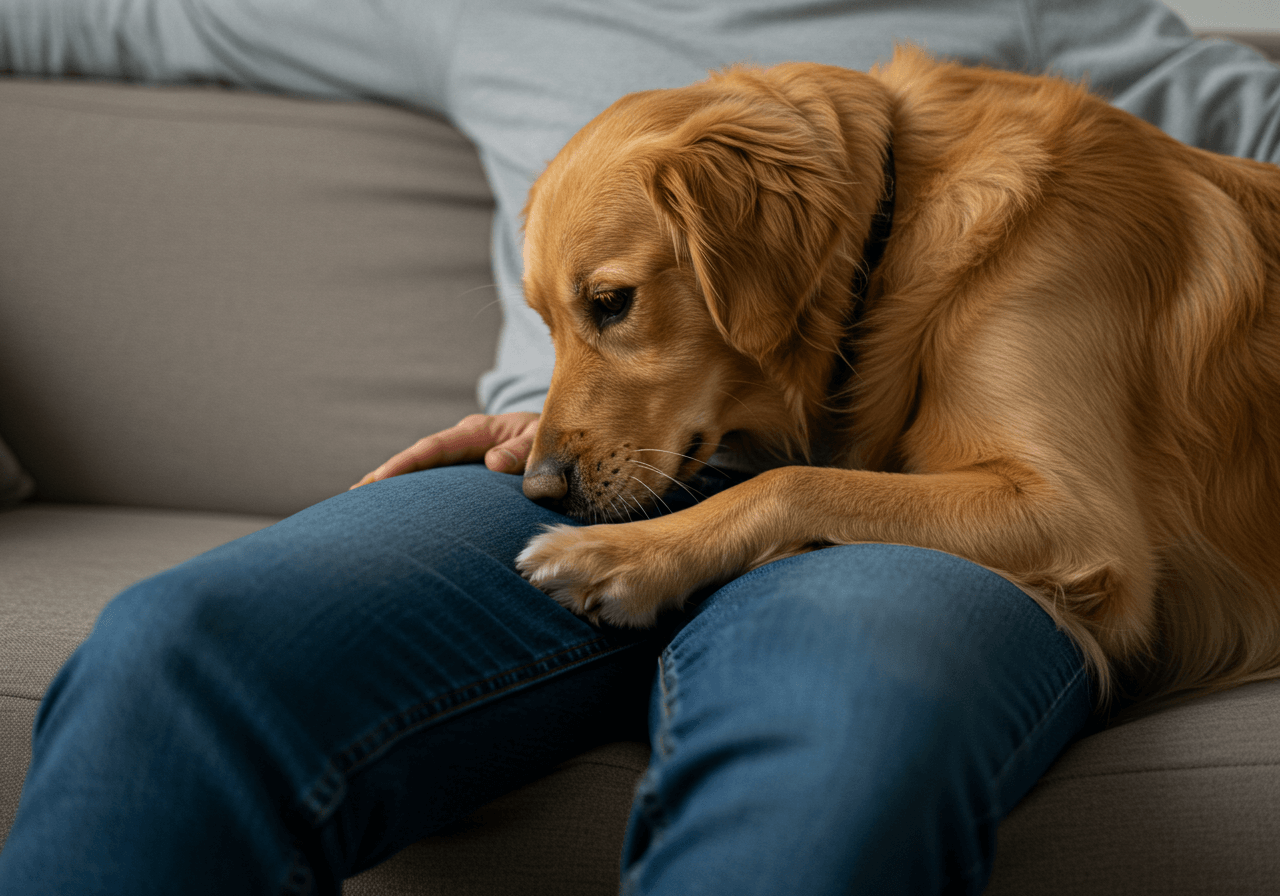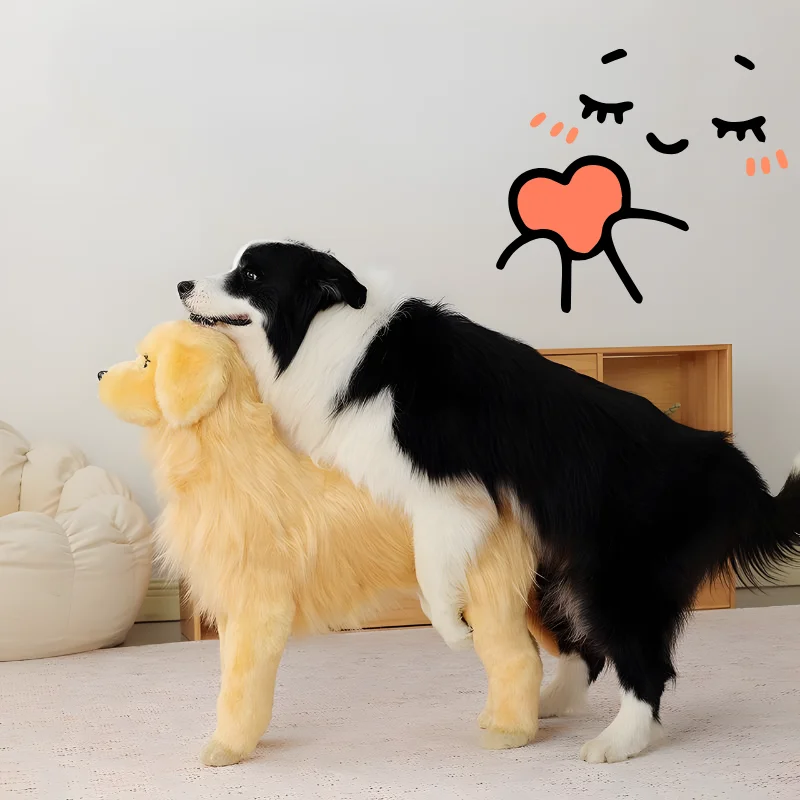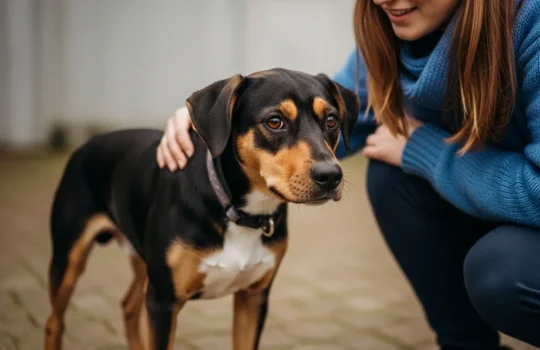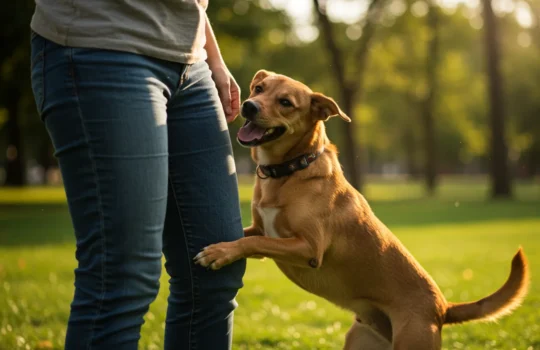Anxiety affects many male dogs, impacting their well-being and overall quality of life. Just like humans, dogs experience a range of emotions, including anxiety. While anxiety represents a normal, healthy response to certain situations, excessive anxiety can develop into anxiety disorders and behavioral problems if owners don’t address it. This article examines male dog anxiety, covering common causes, recognizable symptoms, effective treatment options, and preventive strategies. We aim to equip you with the knowledge and tools to help your furry friend live a happier, more relaxed life.
🔍 DEFINING FEAR, PHOBIA, AND ANXIETY IN MALE DOGS
Understanding the differences between fear, phobia, and anxiety helps you accurately assess and address your male dog’s emotional state.
Fear: Fear represents an instinctual response to a real or perceived immediate threat. It serves as an adaptive mechanism that prepares the body for fight, flight, or freeze. For example, a dog might show fear when confronting a growling dog or a speeding car.
Phobia: A phobia involves a persistent and excessive fear of a specific stimulus. Dogs often exhibit irrational and disproportionate responses to the actual threat. The triggering stimulus might include a vacuum cleaner, balloons, or even the sight of a specific object. The response often appears intense and can be debilitating. Associated events or even memories can trigger a phobic response.
Anxiety: Anxiety involves the anticipation of unknown or imagined future dangers. It creates a more generalized state of apprehension and can manifest as physical reactions similar to fear, but without a clearly defined, immediate trigger. Your male dog might display anxiety through pacing, panting, or restlessness. Separation anxiety represents a specific type of anxiety marked by distress when left alone. This often leads to destructive behavior and vocalization.
🧠 CAUSES OF MALE DOG ANXIETY
Several factors contribute to anxiety in male dogs. Identifying the root cause proves essential for developing an effective treatment plan.
➤ Fear-Related Anxiety Triggers
Fear-related anxiety commonly stems from specific stimuli. Common triggers include loud noises (fireworks, thunder), unfamiliar strangers, intense visual stimuli (flashing lights), new and overwhelming environments, and specific situations (vet visits, car rides).
➤ Understanding Separation Anxiety
Separation anxiety occurs when a dog cannot find comfort and reassurance when left alone. This can lead to undesirable behaviors, such as urinating or defecating indoors, destructive chewing, and excessive barking. Many factors trigger separation anxiety, including changes in routine, moving to a new home, or the loss of a family member (human or animal).
➤ Age-Related Anxiety in Senior Dogs
Cognitive Dysfunction Syndrome (CDS), often referred to as dog dementia, commonly causes anxiety in senior dogs. CDS creates confusion, disorientation, and a decline in memory and awareness, leading to increased anxiety and fear.
➤ Additional Anxiety Factors
- Traumatic experiences: Past trauma, such as abuse or neglect, can leave lasting emotional scars and contribute to anxiety.
- Lack of socialization: Insufficient socialization during puppyhood makes dogs fearful of new people, places, and situations.
- Genetics: Some dogs inherit a predisposition to anxiety.
- Underlying Medical Conditions: Sometimes, anxiety-like symptoms stem from underlying medical conditions, such as thyroid issues or pain.
🚨 RECOGNIZING SYMPTOMS OF MALE DOG ANXIETY
Identifying anxiety symptoms enables early intervention. These symptoms manifest in various ways:
- Aggression: Anxiety sometimes appears as aggression, either directed at the source of the fear or redirected towards other people or animals.
- Inappropriate Elimination: Urinating or defecating inside the house, despite being house-trained, indicates anxiety.
- Excessive Drooling: Increased salivation commonly occurs as a physiological response to stress.
- Panting: Panting, even when not physically active or hot, signals anxiety.
- Destructive Behavior: Chewing, digging, or scratching at doors and furniture often point to anxiety, particularly separation anxiety.
- Depression: A withdrawn demeanor, decreased appetite, and lack of interest in activities suggest depression, which often links to chronic anxiety.
- Excessive Barking/Howling: Prolonged and relentless vocalization indicates distress and anxiety.
- Pacing: Restless pacing back and forth commonly reveals anxiety.
- Restlessness: An inability to settle down or relax, even in familiar environments, suggests anxiety.
- Repetitive or Compulsive Behaviors: Licking paws, tail chasing, or other repetitive behaviors serve as coping mechanisms for anxiety.
- Behaviors After Neutering: Behaviors such as excessive licking at the incision site, pacing, or repetitive whining may emerge as coping mechanisms for post-neutering anxiety. These actions often reflect the dog’s attempt to manage discomfort, hormonal shifts, or environmental changes following the surgery.
🔬 DIAGNOSING MALE DOG ANXIETY
A proper diagnosis determines the appropriate course of action.
- Veterinary Examination: First, consult with your veterinarian. They will perform a physical exam and run tests to rule out any underlying medical conditions that might contribute to the symptoms.
- Treatment Planning: Your veterinarian will then prescribe medication along with behavior modification exercises.
💊 TREATMENT OPTIONS FOR MALE DOG ANXIETY
Treating male dog anxiety requires a multi-faceted approach, tailored to the individual dog’s needs.
➤ Consulting with Professionals
Begin by consulting with your veterinarian to accurately identify the type of anxiety, explore potential underlying causes, and pinpoint specific triggers. Together, develop a comprehensive treatment plan that integrates training, preventive strategies, and, if necessary, medication.
➤ Training and Counterconditioning
Counterconditioning: Changing Your Dog’s Response Counterconditioning changes your dog’s response to anxiety-causing stimuli. The goal involves replacing anxious behavior with more desirable behavior, such as sitting, focusing on the owner, or performing a trick. Achieve this by pairing the trigger with something positive, like a tasty treat.
Desensitization: Gradually Introducing Triggers Desensitization gradually introduces your dog to their anxiety source in small doses and at decreased intensity. The goal aims to gradually reduce their fear response over time.
Professional Training Support A professional dog trainer with experience in anxiety management provides guidance and support in implementing these techniques effectively.
➤ Anxiety Medications for Dogs
SSRIs and Antidepressants Selective serotonin reuptake inhibitors (SSRIs) and tricyclic antidepressants (TCAs), such as fluoxetine (Prozac) and clomipramine (Clomicalm), help regulate brain chemistry and reduce anxiety.
Benzodiazepines Benzodiazepines, such as alprazolam (Xanax), work well for predictable events, like thunderstorms, fireworks, or car rides, as they create a rapid calming effect.
Selegiline Selegiline (Anipryl) manages anxiety associated with Cognitive Dysfunction Syndrome (CDS) in senior dogs.
Natural Therapies Pheromone products, such as Adaptil diffusers and collars, provide a calming effect. Aromatherapy, using calming essential oils like lavender (used with caution and under guidance), may also benefit anxious dogs.
➤ CBD Oil for Dog Anxiety
Anecdotal Reports Many dog owners report positive results using CBD oil to manage their dog’s anxiety.
Scientific Considerations Scientific data on CBD’s effectiveness for dog anxiety remains limited. CBD products lack regulation, so consult with your veterinarian about potential benefits, risks, and possible side effects.
Ongoing Research The AKC Canine Health Foundation currently funds research into CBD use for dogs with epilepsy. This research may provide further insights into CBD’s potential benefits and risks for other conditions, including anxiety.
➤ Toys for Anxiety Relief
Appropriate toys help dogs release energy and relieve anxiety. Consider size-appropriate options for your dog.
Click on the link to go straight to the large dog sex toys->
Click on the link to go straight to small and medium dog sex toys->
🛡️ PREVENTING MALE DOG ANXIETY
Prevention works better than treatment. Implementing these strategies reduces the likelihood of your dog developing anxiety.
➤ Understanding Canine Communication
Learn to read your dog’s body language. Recognizing signs of discomfort or fear early allows you to remove them from stressful situations or provide reassurance.
➤ Proper Socialization
Expose your dog to various people, dogs, other animals, places, and experiences during their critical socialization period (roughly 3-16 weeks of age). This helps them become well-adjusted and confident.
➤ Effective Obedience Training
Obedience training establishes a healthy relationship built on trust and communication. It also gives your dog a sense of control in anxiety-inducing situations.
➤ Physical and Mental Wellness
Regular physical and mental stimulation promote overall well-being. Combine this with a high-quality diet to support brain health and reduce anxiety.
➤ Managing Trigger Exposure
Minimize your dog’s exposure to known triggers when possible. However, don’t completely avoid these situations. Instead, use them as opportunities for positive training moments.
🏠 CREATING A SAFE SPACE FOR YOUR ANXIOUS DOG
A safe space provides your dog with a secure and comfortable retreat where they can relax and feel protected.
- Calm and Private Retreat: Ensure your dog accesses a calm, quiet, and private space where they can escape stressful situations.
- Furniture Style Enclosed Crates: These provide a den-like atmosphere many dogs find comforting.
- Covered “Cave” Beds: These beds offer security and enclosure.
- Doggie Tent Beds: Similar to cave beds, these tents provide a safe and cozy space.
👨⚕️ WHEN TO SEEK PROFESSIONAL HELP
Knowing when to seek professional help proves essential.
- Ineffective home remedies: If your at-home remedies don’t provide relief, consult a professional.
- Severe or sudden onset: If the anxiety appears severe or has a sudden onset, seek immediate professional intervention.
- Underlying health concerns: A veterinarian can rule out any underlying medical conditions.
- Advanced treatment options: A veterinary behaviorist provides specialized behavior modification techniques and medication options.
⚠️ WHAT NOT TO DO WITH AN ANXIOUS DOG
Certain actions worsen your dog’s anxiety.
- Avoid punishment: Punishing your dog for showing anxiety signs only makes them more fearful and anxious.
- Stay calm: Your dog will detect your anger and associate it with their anxiety, worsening the situation.
📝 CONCLUSION: MANAGING ANXIETY IN MALE DOGS
Anxiety affects many dogs, and understanding the causes, symptoms, and treatments improves their well-being. A multi-faceted approach, including training, environmental modifications, and, when necessary, medication, effectively manages anxiety. Always consult with your veterinarian for diagnosis, treatment planning, and to rule out any underlying health issues.

